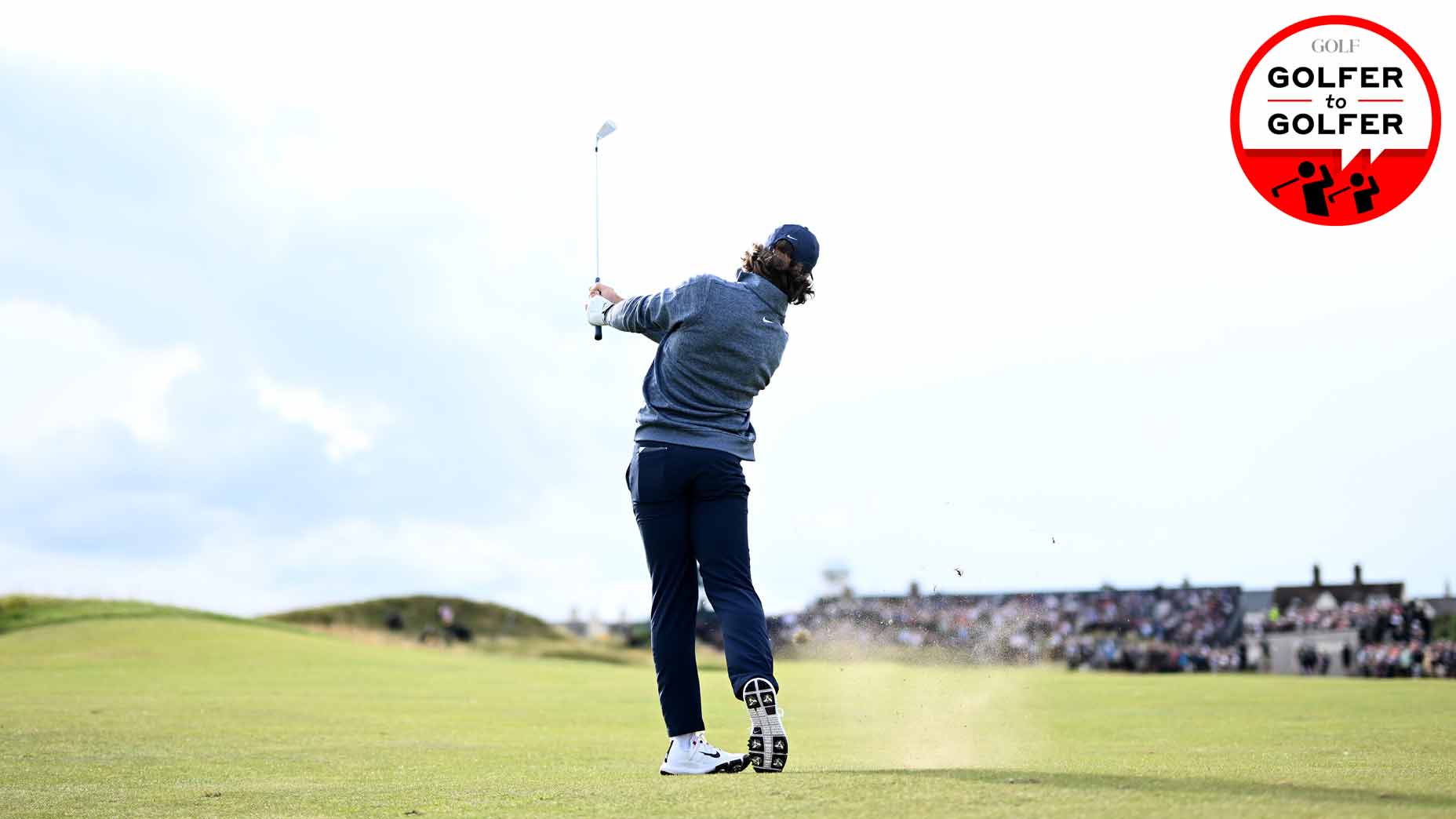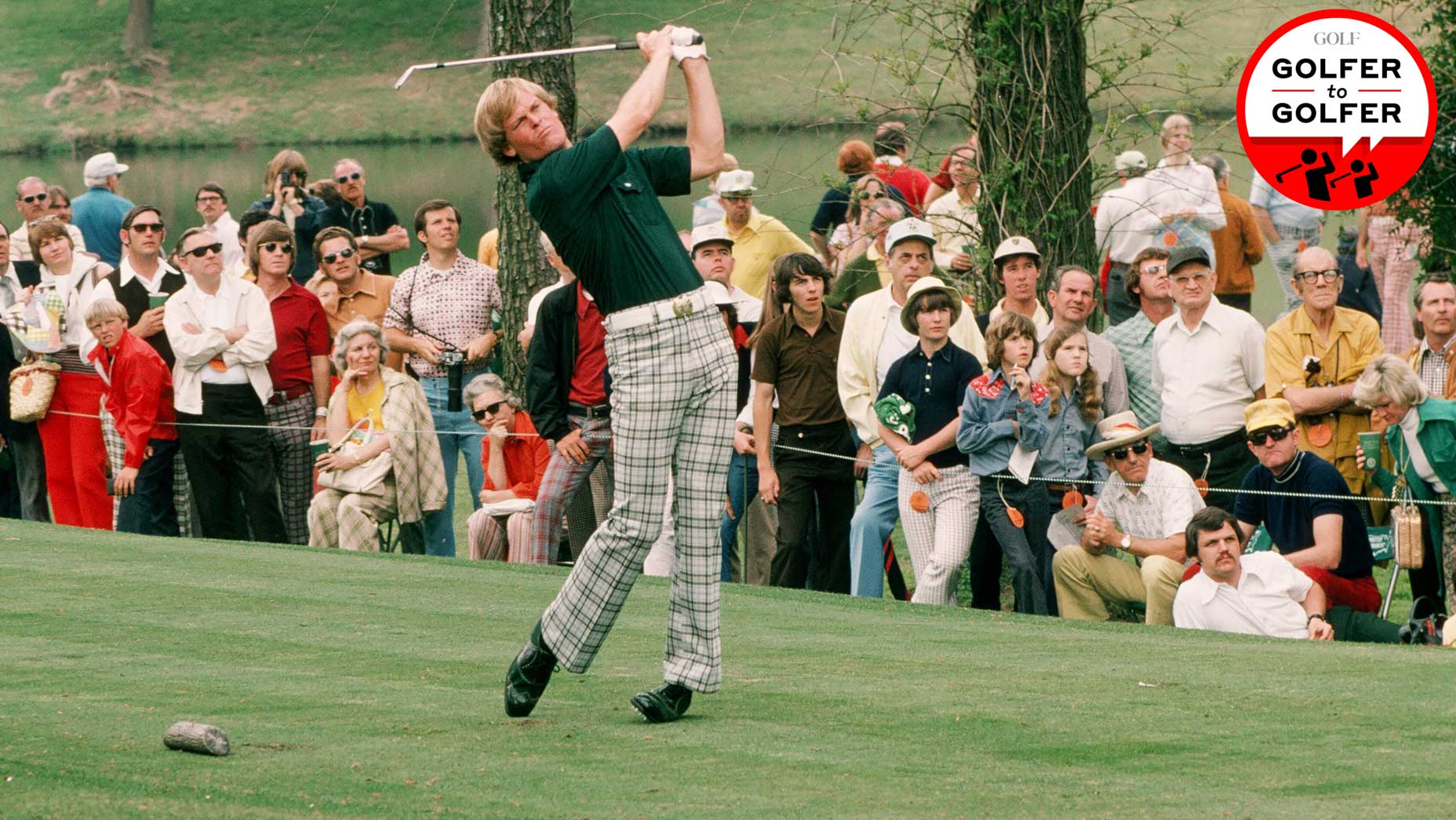Welcome to our new series, Golfer-to-Golfer, where we try to learn from all different kinds of avid players out there, in hopes that the rest of us can take away something that might improve our own games.
Golf is a never-ending quest for improvement. No matter how good you get, there’s always ways to get better — and that truth holds up for even the best players in the world.
“I never feel like I’ve figured out this game,” Rory McIlroy said last year. “I don’t think I ever will. But everyday I wake up trying to get closer.”
This truth is discouraging for some, and emboldening for others. It’s tough knowing you’ll never perfect your craft, but the journey to improvement is part of the fun. That journey isn’t always a linear one, though. There are ebbs and flows in your game throughout your career that can have you on top of a mountain one day, and considering quitting the next.
Take the journey of Lou Stagner, for example. The data guru is not shy about documenting the progress of his game on Twitter, and he saw major gains toward the end of the season. But dropping six shots in 10 weeks didn’t tell the entire story — it was a process. He might’ve seen tons of improvement at the end of the year, but getting to that point took serious work.
IT WAS A JOURNEY:
— Lou Stagner (Golf Stat Pro) (@LouStagner) December 20, 2022
It may look like I improved quickly, but this journey started in December of 2021.
That's when I started working with @jasongiesbrecht.
As you can see, things got worse before they got better. pic.twitter.com/FFUKjKrQwN
“It may look like I improved quickly,” Stagner said. “But this journey started in December of 2021.”
At the end of 2021, Stagner decided to get serious about improvement on the golf course. So he began a regimented routine to help him shave strokes off his handicap. Below are the five keys he listed for his improvement.
1. Work with a coach
You’ve likely heard the cliché that if you’re serious about golf, you need to take lessons. But the reason it’s repeated ad nauseam is because it’s true. Sure, you can make some gains on your own, but if you really want to improve, you’ll get the assistance of an expert.
2. ‘Short’ club
Another key for Stagner came in the form of a short club he keeps in his house. He periodically picked it up throughout the day to instill the positions he was looking for in his swing. It might not seem like much, but if you’re able to groove the proper feel over and over again, it’ll become second nature.
SHORT CLUB:
— Lou Stagner (Golf Stat Pro) (@LouStagner) December 20, 2022
I keep this short club in the house. I swing it throughout the day.
A couple minutes here. A couple minutes there.
I focus on exaggerated feels. I swing VERY slowly.
This has been a HUGE help. pic.twitter.com/GL8jD7t4Da
3. Swinging rope
Sometimes the best training aids are the simple ones. That’s certainly the case for the rope Stagner used to groove his swing. For this drill, all you need is a rope to work on kinematic sequencing and tempo. Once you can properly swing the rope, swinging a club will feel easy.
4. Feels
A reliable swing finds reliable positions at key moments in the swing — and you need to be able to find these positions. The best way to do that? Focus on feels. Find drills that help over exaggerate the positions you need to be in, and work on feeling that during your practice. If you can feel the proper positions, you’ll be well on your way to more consistency.
5. Feedback
To be efficient with your practice, you need feedback. Whether that be from a launch monitor, watching video or simply finding it in the dirt, you need feedback on your swing. Try altering your swing to manipulate the numbers on the monitor, or looks on the video, and see how it affects your ball flight. Once you understand how your swing alterations affect the flight, you’ll be on your way to having better control of the ball.











